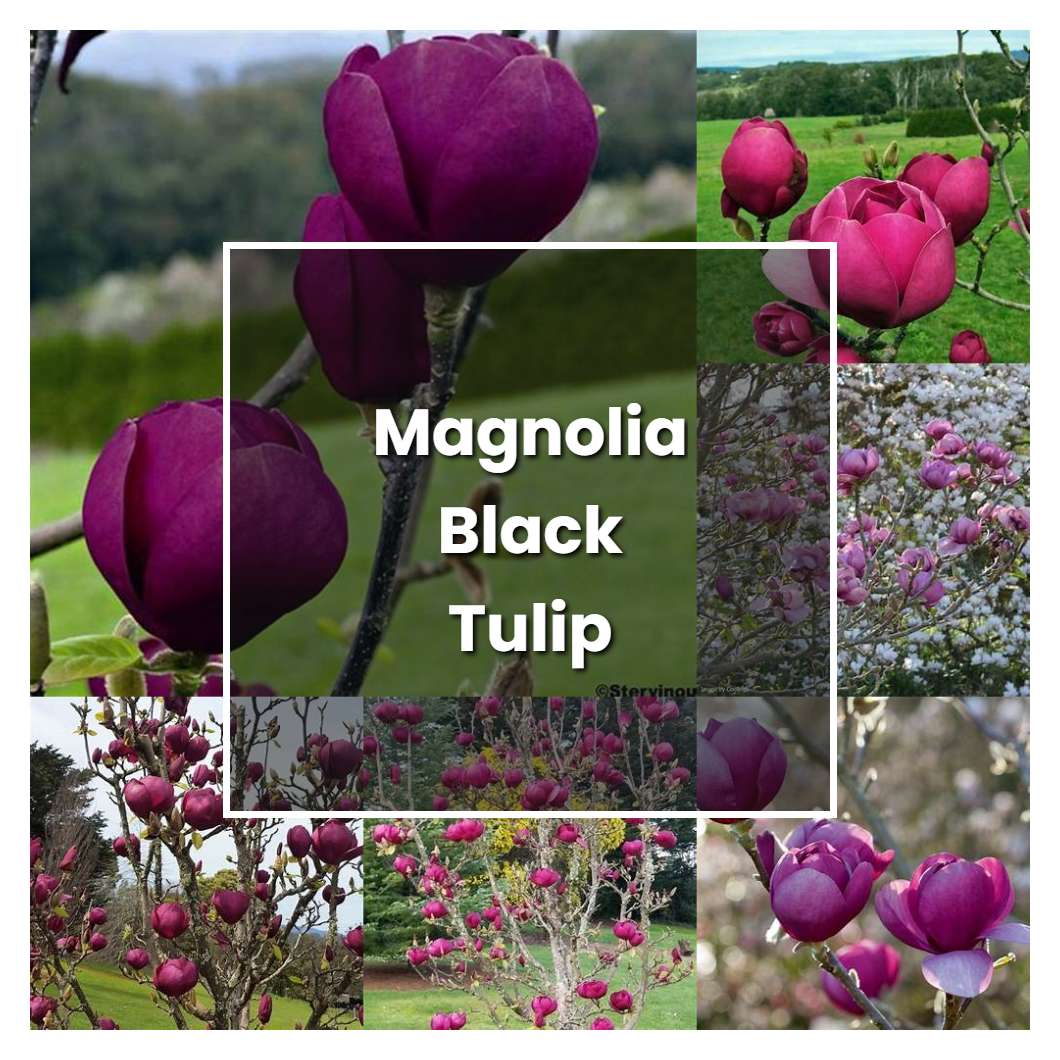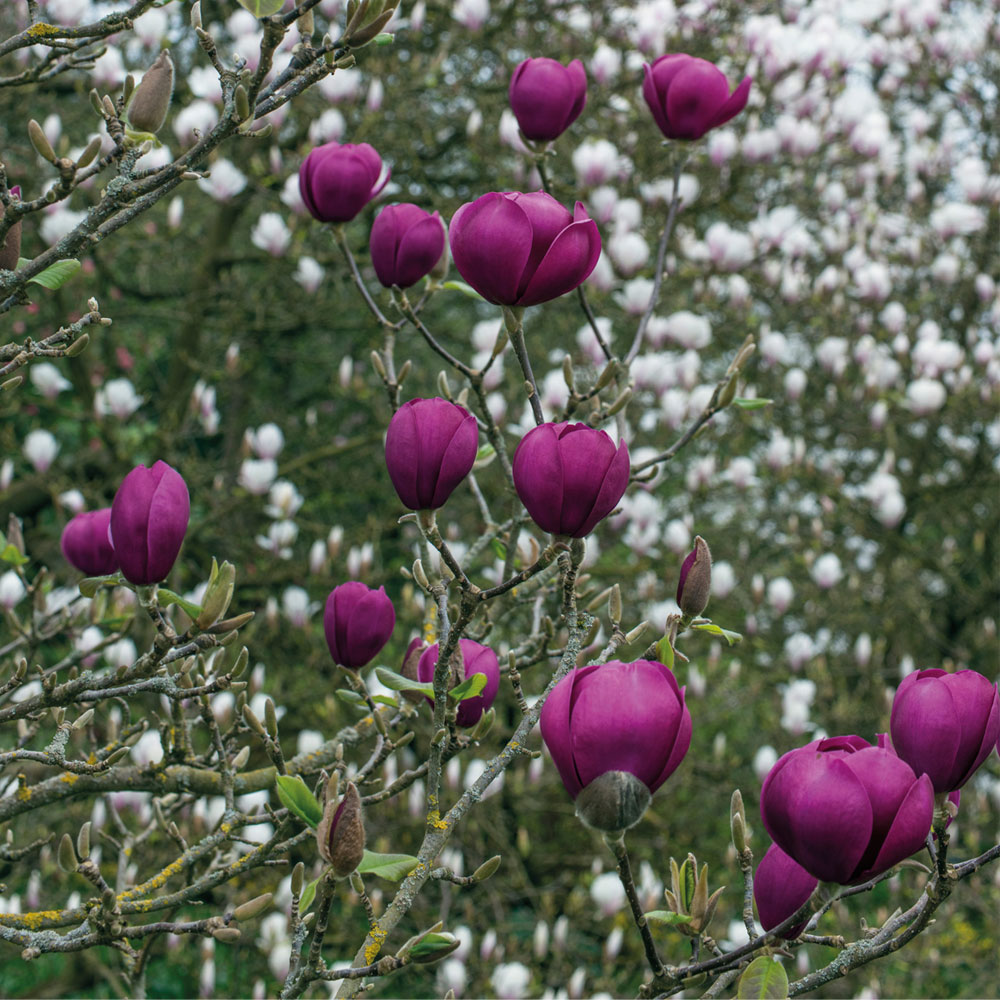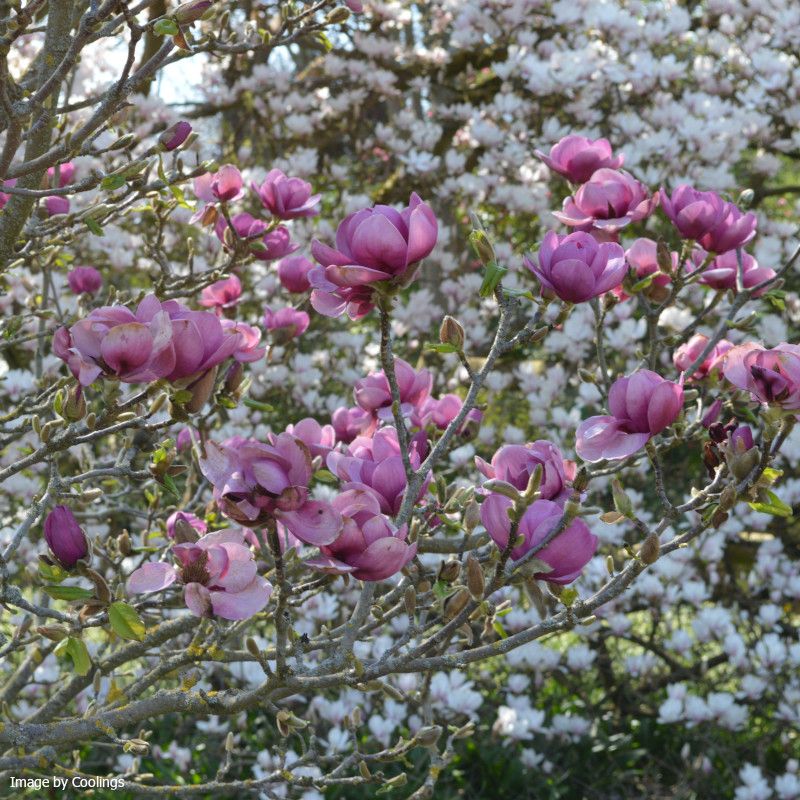Unlocking the Secrets of the Black Tulip Magnolia’s Growth Patterns
The Black Tulip Magnolia, a rare and stunning variety of magnolia, has captivated the hearts of many gardeners and plant enthusiasts. Its unique growth characteristics, which include a slow to moderate growth rate, make it an ideal choice for gardeners who want to add a touch of elegance and sophistication to their outdoor space. Understanding the Black Tulip Magnolia’s growth patterns is crucial to providing optimal care and ensuring that this magnificent tree thrives in its environment.
One of the key factors that influence the Black Tulip Magnolia’s growth rate is its genetic makeup. As a hybrid of the Magnolia liliiflora and Magnolia stellata, the Black Tulip Magnolia inherits the best traits from its parent plants, resulting in a tree that is not only stunningly beautiful but also remarkably resilient. However, its growth rate is also influenced by environmental factors, such as climate, soil quality, and sunlight exposure.
In terms of climate, the Black Tulip Magnolia prefers a temperate climate with mild winters and warm summers. It thrives in USDA Hardiness Zones 5-9, where the average annual extreme minimum temperature ranges from -20°F to 30°F (-29°C to -1°C). In areas with harsher winters, the tree may require protection from extreme cold and wind.
Soil quality is also essential for the Black Tulip Magnolia’s growth. It prefers well-draining, slightly acidic soil with a pH range of 6.0-7.0. Gardeners can amend the soil with organic matter, such as compost or manure, to improve its fertility and drainage.
Sunlight exposure is another critical factor that affects the Black Tulip Magnolia’s growth rate. While it can tolerate partial shade, the tree prefers full sun to partial shade, with at least 4-6 hours of direct sunlight per day. In areas with intense sunlight, gardeners may need to provide some shade, especially during the hottest part of the day.
By understanding the Black Tulip Magnolia’s growth patterns and providing optimal care, gardeners can enjoy the beauty and elegance of this stunning tree for years to come. With proper care and attention, the Black Tulip Magnolia can grow up to 10-15 feet tall, with a spread of 6-8 feet, making it an ideal choice for small to medium-sized gardens.
How to Create an Ideal Environment for Your Black Tulip Magnolia
Creating an ideal environment for your Black Tulip Magnolia is crucial for promoting healthy growth and encouraging blooming. To mimic its natural habitat, gardeners should focus on providing the right soil, sunlight, and watering conditions.
Soil Requirements: The Black Tulip Magnolia prefers well-draining, slightly acidic soil with a pH range of 6.0-7.0. To achieve this, gardeners can amend the soil with organic matter, such as compost or manure. A mix of peat moss, perlite, and vermiculite can also help to improve soil drainage and aeration.
Sunlight Exposure: The Black Tulip Magnolia thrives in full sun to partial shade, with at least 4-6 hours of direct sunlight per day. However, in areas with intense sunlight, gardeners may need to provide some shade, especially during the hottest part of the day. A location with eastern or western exposure is ideal, as it provides gentle, indirect sunlight.
Watering Needs: The Black Tulip Magnolia requires consistent moisture, especially during the first year after planting. Gardeners should water the tree regularly, providing about 1 inch of water per week. However, it’s essential to avoid over-watering, which can lead to root rot and other problems.
Temperature: The Black Tulip Magnolia prefers a temperate climate with mild winters and warm summers. It thrives in USDA Hardiness Zones 5-9, where the average annual extreme minimum temperature ranges from -20°F to 30°F (-29°C to -1°C). In areas with harsher winters, the tree may require protection from extreme cold and wind.
Humidity: The Black Tulip Magnolia prefers a relatively high humidity, typically above 50%. However, it can adapt to average humidity levels, making it a great choice for gardeners in a variety of climates.
By providing the right environment, gardeners can promote healthy growth and encourage blooming in their Black Tulip Magnolia. With proper care and attention, this stunning tree can thrive and become a beautiful addition to any garden.
Nourishing Your Black Tulip Magnolia: Fertilization and Pruning Techniques
Fertilization and pruning are essential components of Black Tulip Magnolia care. Proper fertilization provides the necessary nutrients for healthy growth, while pruning helps maintain the tree’s shape and promotes blooming.
Fertilization: The Black Tulip Magnolia benefits from regular fertilization, especially during the growing season. A balanced, slow-release fertilizer with a ratio of 10-10-10 (nitrogen-phosphorus-potassium) is ideal. Apply the fertilizer in early spring, following the manufacturer’s instructions. Avoid over-fertilizing, as this can damage the tree’s roots and lead to nutrient imbalances.
Pruning: Pruning is crucial for maintaining the Black Tulip Magnolia’s shape and promoting healthy growth. Prune the tree in late winter or early spring, removing any dead, diseased, or damaged branches. Use sharp, clean pruning tools to prevent spreading diseases. Cut branches at a 45-degree angle, just above a growth node, to promote new growth.
Pruning Techniques: There are several pruning techniques to consider when caring for your Black Tulip Magnolia. Thinning involves removing select branches to allow more sunlight to reach the tree’s interior. Reduction pruning involves reducing the length of branches to maintain the tree’s shape. Pinching involves removing the tips of branches to promote branching and blooming.
Tools and Equipment: When pruning your Black Tulip Magnolia, use high-quality, sharp pruning tools to prevent damaging the tree’s bark or spreading diseases. A pair of bypass pruners or loppers is ideal for pruning smaller branches, while a pruning saw is better suited for larger branches.
Timing: The timing of fertilization and pruning is critical for the Black Tulip Magnolia’s growth rate. Fertilize the tree in early spring, when new growth begins, and prune in late winter or early spring, before new growth starts. This allows the tree to absorb the necessary nutrients and respond to pruning.
By following these fertilization and pruning techniques, gardeners can promote healthy growth and encourage blooming in their Black Tulip Magnolia. With proper care and attention, this stunning tree can thrive and become a beautiful addition to any garden.
Understanding the Black Tulip Magnolia’s Growth Rate: What to Expect
The Black Tulip Magnolia is a slow to moderate growing tree, with an average annual growth rate of 1-2 feet per year. This growth rate can be influenced by various factors, including climate, soil quality, sunlight exposure, and watering conditions.
Factors Affecting Growth Rate: Climate is one of the most significant factors affecting the Black Tulip Magnolia’s growth rate. Trees growing in warmer climates with mild winters and hot summers tend to grow faster than those in cooler climates with harsh winters and cool summers. Soil quality also plays a crucial role, with trees growing in well-draining, fertile soil tend to grow faster than those in poor soil.
Sunlight exposure and watering conditions also impact the Black Tulip Magnolia’s growth rate. Trees receiving full sun to partial shade tend to grow faster than those in deep shade, while consistent moisture levels promote healthy growth.
Measuring and Tracking Growth: To ensure optimal care, it’s essential to measure and track the Black Tulip Magnolia’s growth regularly. Use a tape measure or a growth gauge to record the tree’s height and width at regular intervals. This will help you identify any growth patterns or issues and make adjustments to the tree’s care accordingly.
Growth Stages: The Black Tulip Magnolia goes through several growth stages, including the seedling stage, sapling stage, and mature stage. During the seedling stage, the tree grows rapidly, producing a taproot and developing its root system. In the sapling stage, the tree continues to grow, producing a single stem and developing its branch structure. In the mature stage, the tree reaches its full height and spread, producing flowers and seeds.
By understanding the Black Tulip Magnolia’s growth rate and factors that influence it, gardeners can provide optimal care and promote healthy growth. Regular measurement and tracking of growth will help identify any issues and ensure the tree reaches its full potential.
Pest and Disease Management: Protecting Your Black Tulip Magnolia
The Black Tulip Magnolia is generally a hardy and disease-resistant tree, but it can still be susceptible to certain pests and diseases. Regular monitoring and maintenance are essential to prevent infestations and infections, and to ensure the tree’s optimal growth and health.
Common Pests: The Black Tulip Magnolia can be affected by various pests, including aphids, scales, and spider mites. These pests can cause damage to the tree’s leaves, stems, and flowers, and can also transmit diseases. Regularly inspect the tree for signs of infestation, such as white, cottony patches or sticky honeydew droplets.
Common Diseases: The Black Tulip Magnolia can be susceptible to various diseases, including root rot, leaf spot, and powdery mildew. These diseases can cause damage to the tree’s roots, leaves, and flowers, and can also affect its growth and health. Regularly inspect the tree for signs of disease, such as yellowing or browning leaves, black spots, or white powdery patches.
Prevention and Treatment: To prevent pest and disease infestations, maintain good tree hygiene, including removing weeds, debris, and infested branches. Use organic or chemical controls as needed, and follow the product’s instructions carefully. For diseases, use fungicides or bactericides as needed, and follow the product’s instructions carefully.
Biological Controls: Biological controls, such as introducing beneficial insects or using microorganisms, can also be effective in managing pests and diseases. For example, lady beetles and lacewings can be used to control aphids and other pests, while Trichoderma and Bacillus can be used to control fungal diseases.
Cultural Controls: Cultural controls, such as adjusting the tree’s environment, can also be effective in managing pests and diseases. For example, providing good air circulation, watering carefully, and avoiding over-fertilization can help prevent disease.
By monitoring the tree regularly and taking prompt action to prevent and treat infestations and infections, gardeners can protect their Black Tulip Magnolia and ensure its optimal growth and health.
Supporting Your Black Tulip Magnolia’s Structural Integrity
The Black Tulip Magnolia is a stunning tree with a unique, upright growth habit. However, its slender branches and large flowers can make it prone to damage from wind, snow, and other environmental stressors. Providing support for the tree’s structural integrity is essential to promote a strong and stable tree.
Staking: Staking is a common technique used to support the Black Tulip Magnolia’s structural integrity. Use a sturdy stake, such as a wooden or metal rod, to provide support for the tree’s trunk and branches. Drive the stake into the ground at an angle, making sure it is securely anchored. Tie the tree to the stake using a soft material, such as twine or cloth, to prevent damage to the bark.
Pruning: Pruning is another essential technique for supporting the Black Tulip Magnolia’s structural integrity. Prune the tree regularly to maintain its shape and promote healthy growth. Remove any dead, diseased, or damaged branches, and thin out the tree’s canopy to allow more sunlight to reach the interior branches.
Cabling: Cabling is a technique used to support the Black Tulip Magnolia’s branches. Use a sturdy cable, such as a steel or nylon rope, to provide support for the branches. Attach the cable to the branch and the trunk, making sure it is securely anchored. This will help to prevent branch breakage and promote a strong and stable tree.
Guys: Guys are another technique used to support the Black Tulip Magnolia’s branches. Use a sturdy guy, such as a wooden or metal rod, to provide support for the branches. Drive the guy into the ground at an angle, making sure it is securely anchored. Tie the branch to the guy using a soft material, such as twine or cloth, to prevent damage to the bark.
By providing support for the Black Tulip Magnolia’s structural integrity, gardeners can promote a strong and stable tree that will thrive for years to come. Regular staking, pruning, cabling, and guying can help to prevent damage from environmental stressors and promote healthy growth.
Black Tulip Magnolia Varieties: Choosing the Right One for Your Garden
The Black Tulip Magnolia is a stunning variety of magnolia, known for its unique, tulip-shaped flowers and striking black-purple color. However, there are several other varieties of Black Tulip Magnolias, each with its own unique characteristics and growth habits.
Black Tulip Magnolia ‘Nigra’: This variety is known for its deep black-purple flowers and compact growth habit, making it an ideal choice for small gardens or containers.
Black Tulip Magnolia ‘Rubra’: This variety is known for its bright red flowers and vigorous growth habit, making it an ideal choice for larger gardens or landscapes.
Black Tulip Magnolia ‘Alba’: This variety is known for its pure white flowers and slow growth habit, making it an ideal choice for gardens with limited space or for those who want a more subtle display of color.
Choosing the Right Variety: When choosing a Black Tulip Magnolia variety for your garden, consider the climate, soil, and space constraints. If you live in a warm climate, choose a variety that is heat-tolerant, such as ‘Nigra’ or ‘Rubra’. If you live in a cool climate, choose a variety that is cold-hardy, such as ‘Alba’.
Consider the Soil: Black Tulip Magnolias prefer well-draining, slightly acidic soil. If your soil is heavy clay or sandy, choose a variety that is tolerant of these conditions, such as ‘Nigra’ or ‘Rubra’.
Consider the Space: Black Tulip Magnolias can grow quite large, so consider the space available in your garden. If you have limited space, choose a compact variety, such as ‘Nigra’ or ‘Alba’.
By choosing the right Black Tulip Magnolia variety for your garden, you can enjoy the beauty and elegance of this stunning tree for years to come.
Common Mistakes to Avoid When Growing a Black Tulip Magnolia
When growing a Black Tulip Magnolia, it’s essential to avoid common mistakes that can impact the tree’s growth rate and overall health. By being aware of these mistakes, gardeners can take steps to prevent them and ensure optimal growth.
Over-Watering: Over-watering is a common mistake that can lead to root rot and other problems. Black Tulip Magnolias prefer well-draining soil and should not be watered excessively. Check the soil regularly to ensure it’s not too wet or dry.
Under-Fertilizing: Under-fertilizing can impact the Black Tulip Magnolia’s growth rate and overall health. Use a balanced fertilizer during the growing season to provide essential nutrients. Avoid over-fertilizing, as this can damage the tree’s roots and lead to nutrient imbalances.
Inadequate Pruning: Inadequate pruning can impact the Black Tulip Magnolia’s shape and promote disease. Prune the tree regularly to maintain its shape and promote healthy growth. Remove any dead, diseased, or damaged branches, and thin out the tree’s canopy to allow more sunlight to reach the interior branches.
Incorrect Planting: Incorrect planting can impact the Black Tulip Magnolia’s growth rate and overall health. Plant the tree in well-draining soil and full sun to partial shade. Avoid planting in areas with standing water or where water tends to collect.
Ignoring Pest and Disease: Ignoring pest and disease can impact the Black Tulip Magnolia’s growth rate and overall health. Regularly inspect the tree for signs of infestation or infection, and take action promptly to prevent the problem from spreading.
By avoiding these common mistakes, gardeners can ensure optimal growth and health for their Black Tulip Magnolia. Regular monitoring and maintenance are essential to prevent problems and promote healthy growth.






